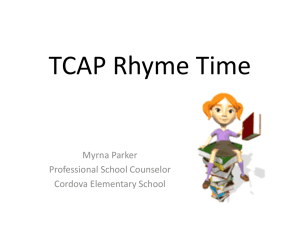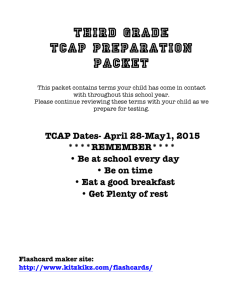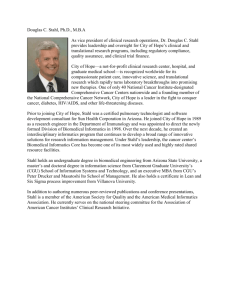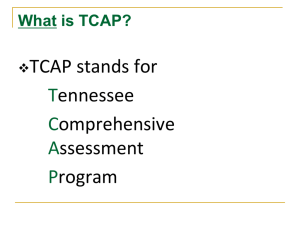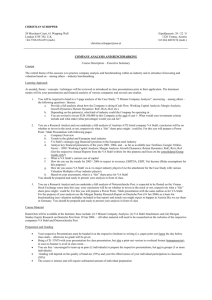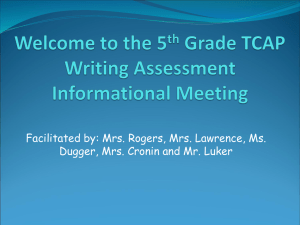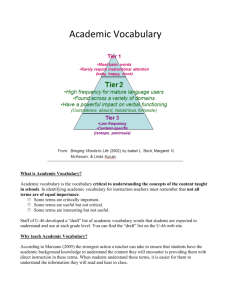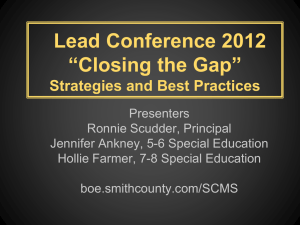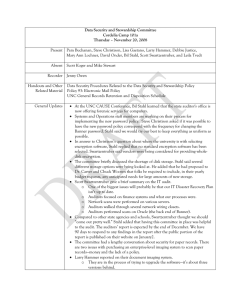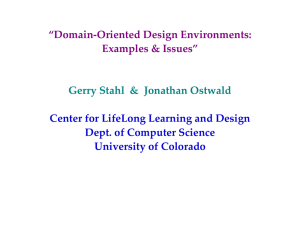Assessment Vocabulary
advertisement
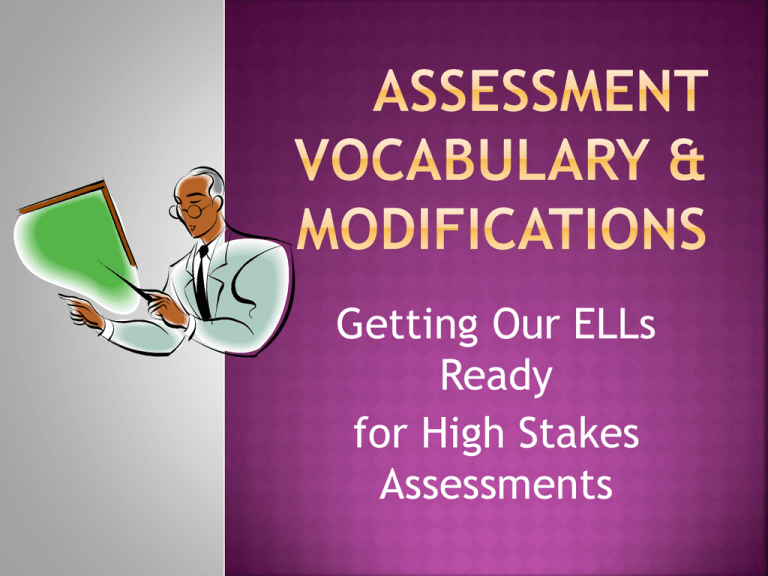
Getting Our ELLs Ready for High Stakes Assessments Magda Sakaan Katy Yates One of the most important elements of language that we focus on as ESL teachers is VOCABULARY DEVELOPMENT! “Knowing a word is not an all-or-nothing phenomenon. Word learning happens incrementally; with each additional encounter with a word, depth of understanding accrues. Dale (1965) posited the existence of (at least) four incremental stages of word knowledge. Stage 1: Never having seen the word before Stage 2: Knowing there is such a word, but not knowing what it means. Stage 3: Having context-bound and vague knowledge of the word’s meaning Stage 4: Knowing the word well and remembering it” (Katherine A. Dougherty Stahl, Marco A. Bravo) “An important aspect of direct vocabulary instruction is selecting appropriate terms to teach. Beck and her colleagues (2002) designated three tiers of words: basic words like clock, happy, and baby are in Tier 1; more advanced general academic or literary words like coincidence, absurd, imaginative, commercial, muscular, duplicate, and restrict are in Tier 2; and domain-specific words such as pronoun, algebra, isthmus, and quark are in Tier 3.” (Marzano, R, http://soltreemrls3.s3-website-uswest2.amazonaws.com/marzanoresearch.com/media/documents/reproducibles/voc ab-common-core/basic-terms-and-phrases.pdf) Academic Vocabulary is essentially comprised of 2 subsets Content or Domain Specific & ASSESSMENT VOCABULARY! These are the words your students will need to know to succeed in taking the TCAP and other high stakes tests. These are the words that we often overlook because they aren’t domain specific. These are the words that will solve the problem argued by most ESL teachers… “How can they answer the question if they don’t even know what they are asking??” These are the words that require explicit instruction initially, and then implicit application, daily. Evaluative/Task Words Students Should Be Familiar With Analyze Systematically and critically examine each of the facts. Compare Show how the facts or ideas are similar. Contrast Show how the facts or ideas are different. Define Set forth the meaning or make something clear. Discuss Present a detailed argument or consideration. Evaluate Determine the value, significance, or worth of. Identify Establish the essential characteristics of. Illustrate Make clear by citing examples. Interpret Present the subject at hand in understandable terms. Infer Draw a conclusion based on given facts; predict, generalize. Justify Show or prove to be right or reasonable. Sequence Arrange in meaningful order, beginning to end. Summarize Explain the main points. Synthesize Combine the parts into a coherent whole. Trace Review in detail, step by step. http://teachingtoday.glencoe.com/howtoarticles/a-test-takers-vocabulary-for-social-studies 1. At the end of the passage, why does Rosa change her mind about Tomas? 2. Ray wrote this journal entry. It contains mistakes. Read the entry and answer numbers 28 through 35. 3. Before Olivia presents her speech, she would like to meet with her friends about her idea. Which is not an example of good behavior in a group activity? 4. What happens after Risha finds the wood in the garage? 5. Which word is a synonym for the underlined word? 6. Which section of the passage explains why the surface of the ocean freezes? Find opportunities in which to infuse the assessment vocabulary into daily interactions with all in the classroom Examples: Desks in rows and columns (clarify) Partition your students into 2 lines for the bathroom. Ask students to get a pencil from the caddy that contains your supplies. “Make sure that you clear off the surface of your tables.” Use Accountable Talk…always. What we do… We create our exit tickets prior to our lesson plans for proper backwards planning. The exit tickets are multiple choice and we often use the CPS clickers to collect the data quickly and efficiently. At the end of the week, the students get the same questions, with the same content, but reformatted into a TCAP format. This gives them exposure to the content, the verbiage and the format they will be seeing on these assessments. Essentially, we eliminate the variable of unfamiliarity to get a more accurate sense of their content knowledge. First, we did a little research in order to create an accurate sentence stem bank… We re-format the content we assessed throughout the week using the sentence stem bank to ensure our students are being regularly exposed to assessment vocabulary. Re-Formatted Original Exit Ticket We all use exit tickets to… …evaluate the effectiveness of our instruction …assess a student’s level of mastery over the content …determine whether or not there is a need for a re-teach. But we can also use them to familiarize our ELLs with standardized testing formats, more specifically, the TCAP (or ELSA) Test Taking Vocabulary http://teachingtoday.glencoe.com/howtoarticles/a-test-takers-vocabulary-forsocial-studies Marzano, R http://soltreemrls3.s3-website-uswest2.amazonaws.com/marzanoresearch.com/media/documents/reproducibles/voc ab-common-core/basic-terms-and-phrases.pdf http://www.tn.gov/education/assessment/achievement/ACH_Gr4_PT_set1.pdf Contemporary Classroom Vocabulary Assessment for Content Areas, Katherine A. Dougherty Stahl, Marco A. Bravo; https://steinhardt.nyu.edu/scmsAdmin/uploads/006/716/Stahl%20Voc%20Assess%20 RT.pdf
